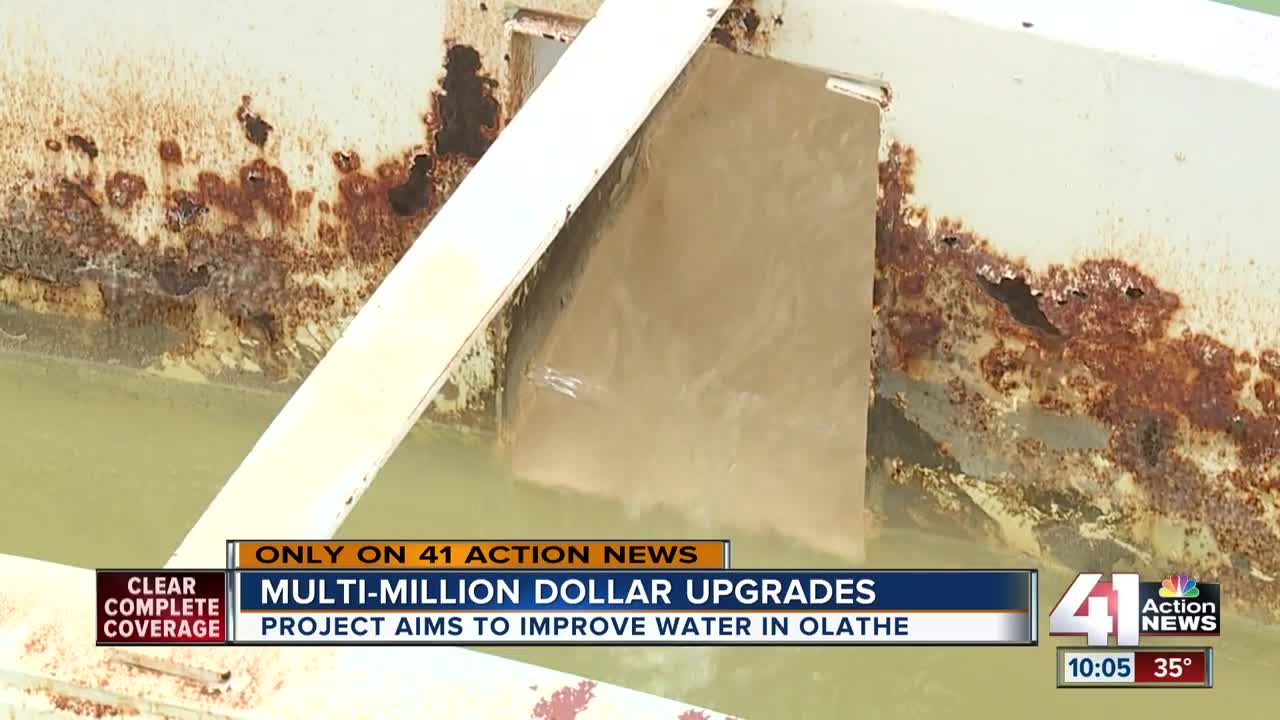OLATHE, Kan. — Olathe Water Treatment Plant #2, which pumps millions of gallons of water every day around the city to over a 100,000 people, will see some big changes over the next two years as part of a $17 million upgrade project.
The current facility dates back to 1964 and has seen different expansions over the years.
The latest project, which already has crews digging up dirt at the site, aims to increase the reliability of the city’s water system and improve the taste and quality of water for the public.
“If you take a shower in the morning, your water comes from us. We provide water to all the hospitals and schools,” Olathe Water Treatment Plant #2 operations manager John Gilroy said. “We’re treating water 365 days a year, 24 hours a day. We always have at least two people here.”
On Thursday, Gilroy gave 41 Action News an exclusive tour of the areas that will see changes with the project.
The lime feed system, which is used to treat water at the facility, will be replaced as the current equipment at the site shows wear and tear.
During the tour, the equipment was seen with plenty of material buildup from recent years.
“What we see is the result of something that got plugged and overflowed,” Gilroy said. “Our maintenance team has to get in here and work on these pumps on a routine basis. It’s a little snug.”
A short distance away, the clarifier tank will also see some changes.
The current tank, which takes in water pumped in from the Kansas River every day, filters water during the treatment process.
“This is the first step of our treatment process right here,” said Gilroy, pointing out the whitish-brown water filing the inside portion of the tank. “This is the raw water from the river and a clarifier gets the big particles out, like big clumps of mud.”
Gilroy later showed 41 Action News diagrams of the new facilities being built as part of the project.
Aside from making the system reliable and improving drinking water, he said the changes were needed to help the city navigate into the future.
“Olathe has experienced a lot of growth here over the last 30 years or so,” he said. “As the city gets bigger and needs more water, we build this facility larger to provide that water.”
Organizers expect the project, which is being paid for through utility bills, to be completed by late 2020.




